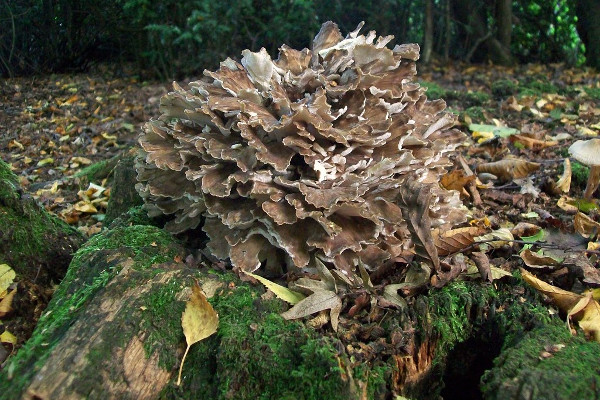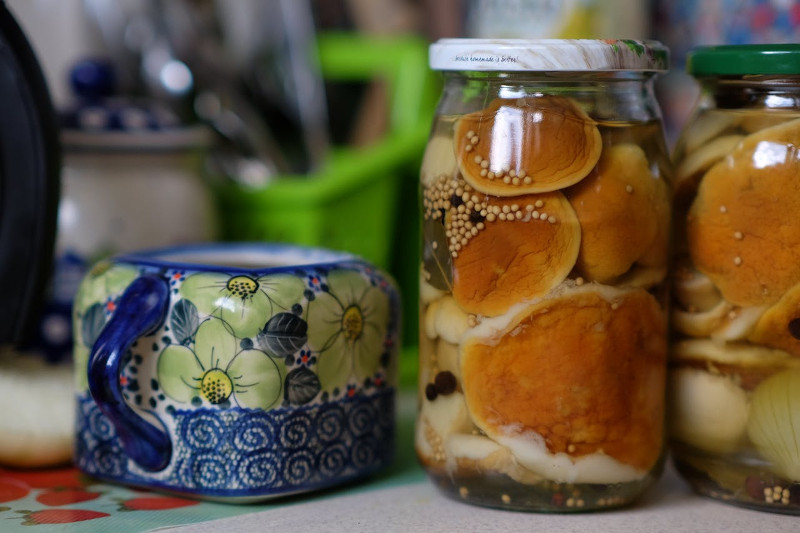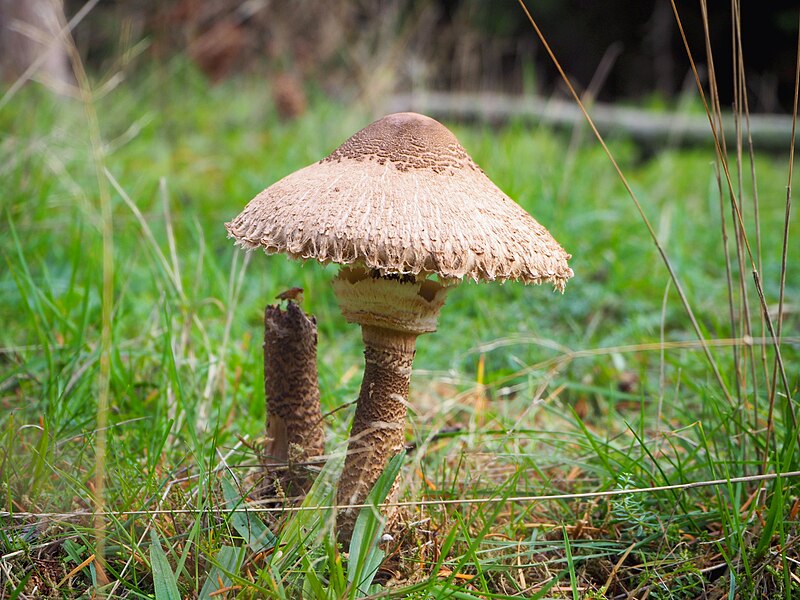Hen of the Woods mushroom, scientifically known as Grifola frondosa, is also called maitake (舞茸), which means “dancing mushroom” in Japanese. This name highlights the mushroom’s unique look and its cultural importance in culinary traditions.
As interest in wild mushrooms grows, exploring the unique characteristics and culinary applications of this species can be rewarding for foragers and culinary enthusiasts alike. What insights might you find about this fascinating mushroom?
Are Hen of the Woods Mushrooms Edible?
Certain wild mushrooms, such as the Hen of the Woods, are highly esteemed for their edibility. Known as Maitake, this mushroom is celebrated for its unique meaty texture and rich spicy/nutty flavor. The Hen of the Woods thrives in wooded areas, often found at the base of oak trees, making it a rewarding find for foragers.

Rich in umami, the Hen of the Woods contains L-glutamate, a natural flavor enhancer that captivates the palate. This compound boosts flavor receptors, enhancing the taste of the mushroom itself and any dishes it complements. Its versatility allows for incorporation into various culinary creations, from soups and stir-fries to risottos and pasta.
For those venturing into the world of wild mushrooms, the Hen of the Woods is a delectable option. Its robust flavor profile elevates meals and fosters a connection to nature’s bounty, encouraging individuals to embrace the joy of foraging and cooking with wild ingredients.
How to Identify Hen of the Woods?
This mushroom typically showcases a rosette-like formation resembling a hen’s plumage, which sets it apart from other fungi. The fruiting body can vary in size, often reaching up to 12 inches across, with multiple overlapping caps that create a layered appearance.

The caps are usually broad and fan-shaped, curling downward at the edges, contributing to its unique silhouette and making it easy to spot on the forest floor. Each cap has a central stem that connects to a thick, sturdy base, anchoring it to the substrate. The overall shape is often uneven, influenced by its growth pattern and the surrounding environment.
Another notable feature is the mushroom’s dense composition, which feels solid when handled. Hen of the Woods grows in clusters, frequently at the base of oak trees, enhancing its distinct presence in the wild. Recognizing these physical traits aids foragers and nature enthusiasts in accurately identifying this remarkable fungus.
Hen of the Woods Underside
The underside of the Hen of the Woods mushroom features a unique porous structure that is vital for identification. It showcases a distinctive ivory white pore layer that is consistent across its fronds. A closer look reveals a maze-like pattern of pores, which aids in recognizing this mushroom.
Color and Texture
The color and texture of Hen of the Woods are key for its identification. This mushroom, scientifically known as Grifola frondosa, showcases a distinctive palette and surface features that set it apart from other fungi. Its cap typically flaunts earthy tones, ranging from light gray to deep brown, with white highlights along the edges. The texture is velvety or fuzzy, often displaying a wavy or undulating surface that echoes the wild.
To illustrate these features, consider the following table:
| Characteristic | Description |
|---|---|
| Color | Light gray to deep brown |
| Edge | White or creamy highlights |
| Texture | Velvety or fuzzy |
| Surface | Wavy or undulating |
Recognizing these attributes aids foragers in confidently identifying Hen of the Woods, leading to a rewarding experience in nature’s bounty.
Size and Shape
Size and shape are important elements in identifying Hen of the Woods, scientifically known as Grifola frondosa. These distinctive characteristics help differentiate it from other fungi, making them valuable for foragers and enthusiasts.
- Size: Hen of the Woods usually grows in large clusters, with individual specimens weighing between 1 to 5 pounds, and some reaching even more. The overall diameter can extend to 12 inches or greater.
- Shape: The mushroom resembles a hen’s ruffled feathers, featuring irregularly shaped caps that fan out from a central stem. These caps can be undulating and overlapping, contributing to a robust appearance.
- Structure: The caps are broad and flat, often measuring 2 to 10 inches in width, with wavy and lobed edges. The dense structure adds to the mushroom’s substantial look.
Best Time to pick Hen of the Woods
Timing is important for foraging Hen of the Woods mushrooms, which typically fruit in the fall from late August to late November. Knowing the best moments for harvesting ensures a rewarding experience and preserves the quality of this sought-after fungus. Many foragers may be tempted to wait for larger specimens, but maturity does not always mean better quality.
Here are key factors to determine the best time to pick Hen of the Woods:
- Firmness: The mushroom should feel solid and dry, indicating it is ready for harvest.
- Cap Structure: Look for tightly packed caps with no visible separation, a sign of freshness.
- Signs of Decay: Avoid mushrooms that show any signs of rot, decay, or insect damage.
- Growth Rate: If the mushroom appears too small, check back in 3-4 days, as they grow moderately fast.
Where to find Hen of the Woods Mushroom?
In the quest for Hen of the Woods mushrooms, foragers should focus on hardwood forests with mature and aging trees. These fungi thrive in damp woodlands and river bottoms, where mature oaks and other hardwood species abound.

Hen of the Woods is particularly fond of the base of dead or dying oak trees, making these sites prime for exploration. However, they can also be found under dead maple trees, blending in with fallen leaves, so a keen eye is important during your search.
Once you identify a location, it’s wise to return each autumn, as these mushrooms tend to grow in the same areas year after year. Be prepared for their size; they can be larger than expected and may require assistance for proper harvesting. This foraging experience not only connects you with nature but also offers the thrill of seeking out one of the forest’s delicious treasures. Enjoy the freedom of exploring the outdoors while searching for this culinary delight.
How to Preserve Maitake?
After foraging for Hen of the Woods mushrooms, proper preservation techniques help maintain their unique flavor and nutritional benefits. Here are several methods to preserve these culinary treasures:
- Freezing: Clean and freeze mushrooms in various forms, such as raw or sautéed. For better flavor retention, consider breading before freezing.
- Pickling: Create a delightful side dish by pickling Hen of the Woods. This method requires refrigeration and offers a balanced flavor profile, lasting over a year.
- Dehydrating: Dehydrated mushrooms are excellent for soups and stews. While they may lose some texture, they remain shelf-stable for years in sealed jars.
- Freeze Drying: This method preserves the most nutrients. Though it requires an initial investment, the longevity and health benefits make it worthwhile.



